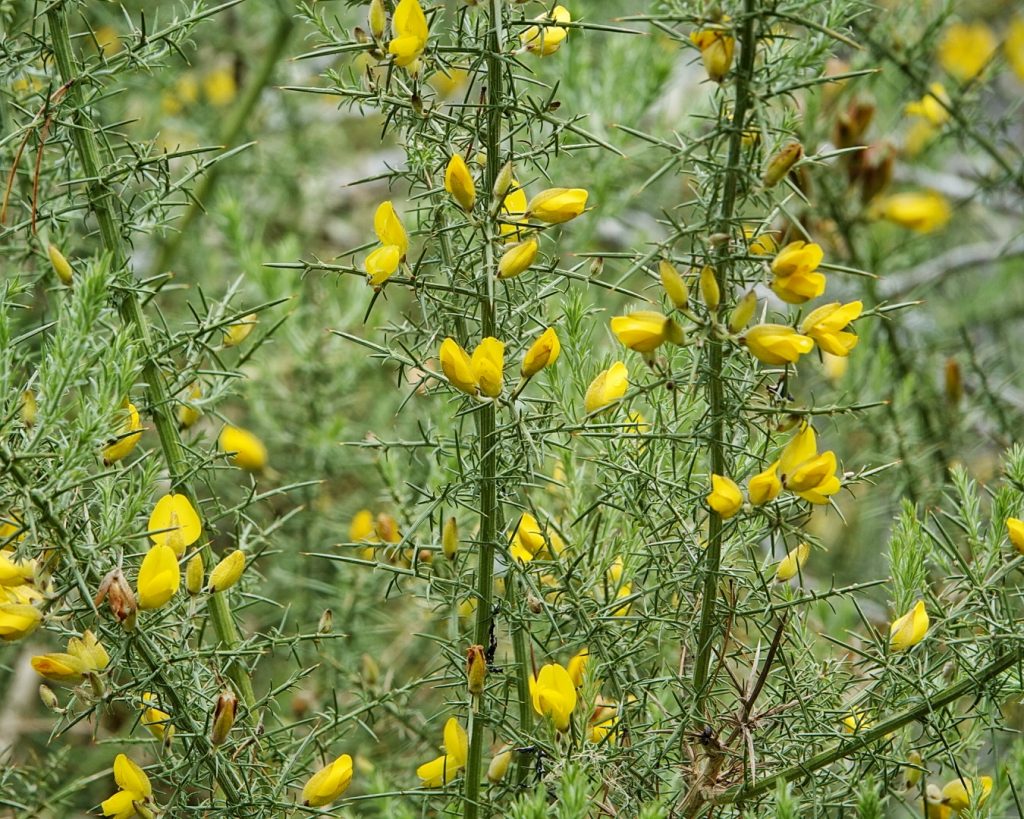
I have finally finished organizing the photos I’ve taken over the last few years. Well, that is not an accurate statement. I have actually organized the last 7500 or so. The previous 40,000+ were edited and culled, and then placed in bulk on my external hard drive, because I foolishly assumed they would be in chronological order on that hard drive, and that I could organize them at my leisure. Alas, that has turned out not to be the case, as I discovered when I went back to look for some photos.
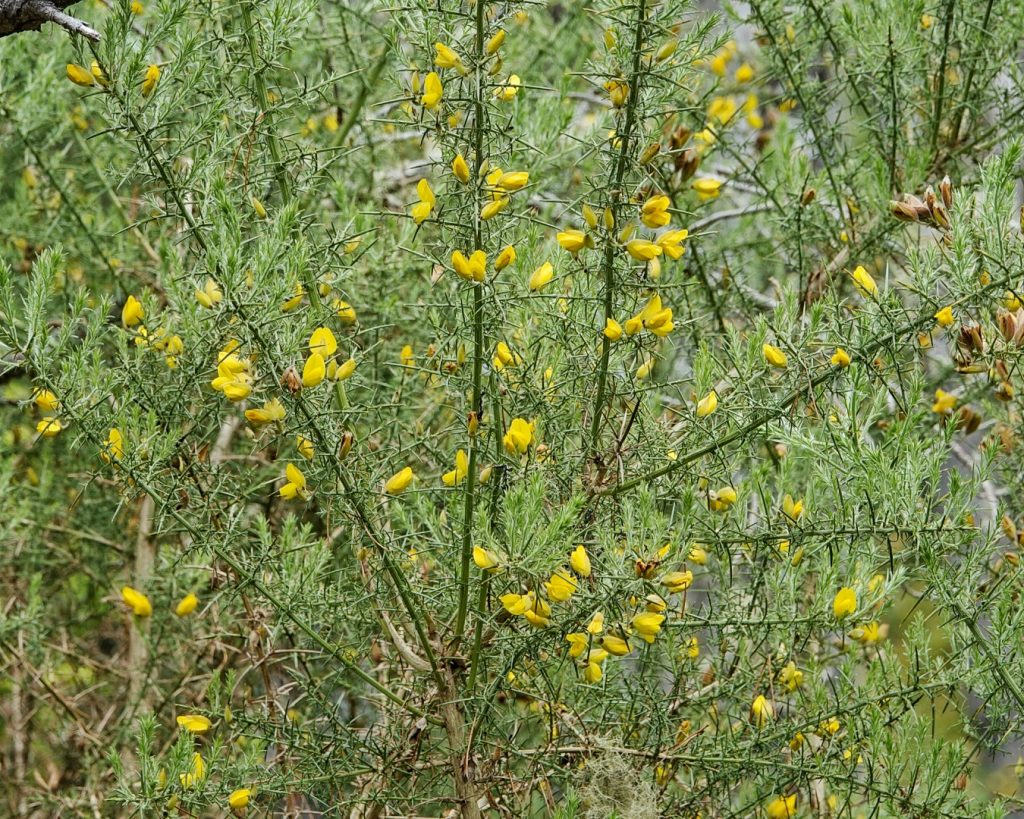
There must be some algorithm that determines their order, but it is certainly not by date, and they are effectively randomized. I’m sure my photos of the White-faced Ibis are there, but it would probably be quicker, easier, and more fun to drive to Malheur NWR in May and hope to get new ones, than to slog methodically through the tens of thousands of pics to relocate them. One hopes that the tedium and frustration of the last 10 days has burned itself into my mind so as to ensure that I process and file my photos as I go, but I’ve been known to require multiple whacks upside the head before I’m convinced to abandon my self sabotaging ways. So, I guess we’ll see.
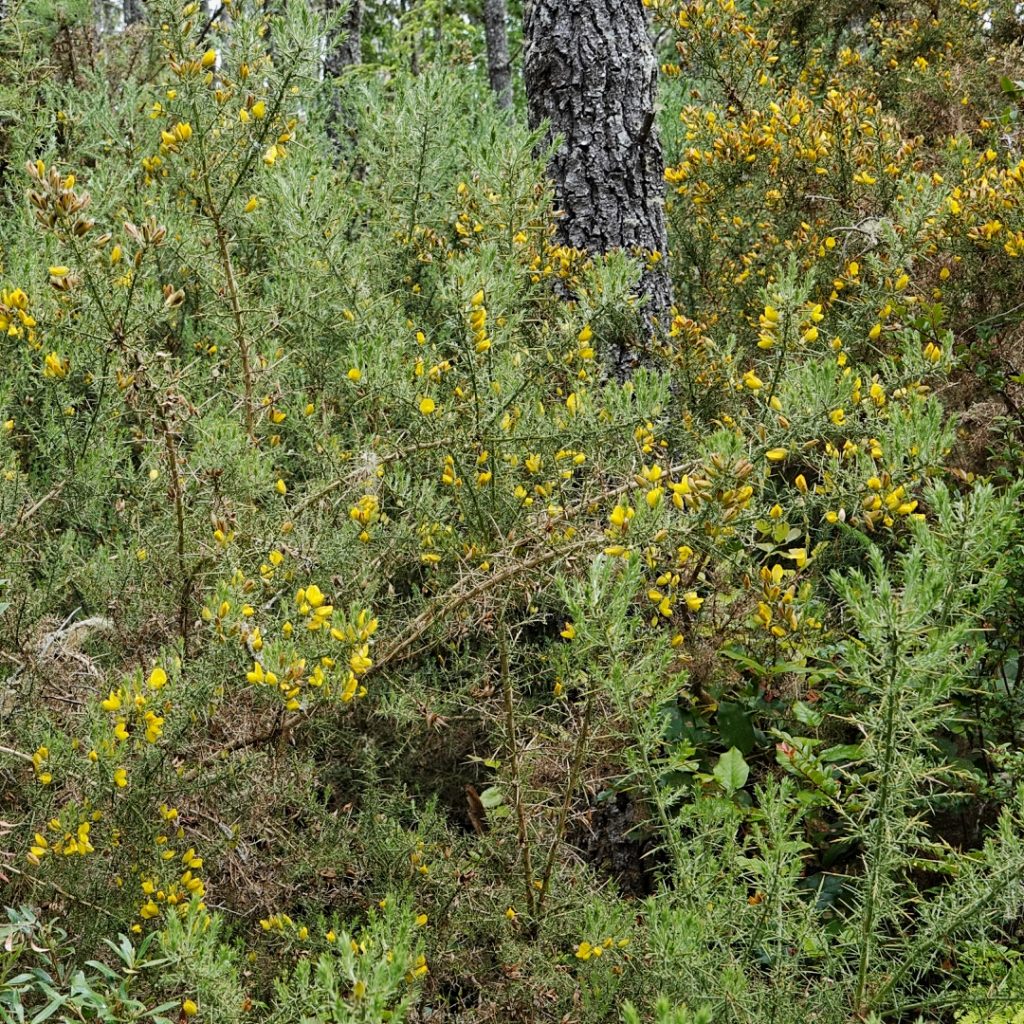
One of the things I found in those photos was this gnarly plant, Ulex europaeus, also known as gorse (as well as furze, prickly broom, and whin in its native Europe). This member of the pea family (Fabaceae) is a beautiful but seriously spiky plant, and getting through a thicket of the stuff would certainly entail blood loss unless you were dressed in welding leathers, and probably even then. There is always something compelling about plants that are heavily armed with spikes and thorns, harmless when left alone (like the floral equivalent of porcupines), but bad news when not given proper respect.
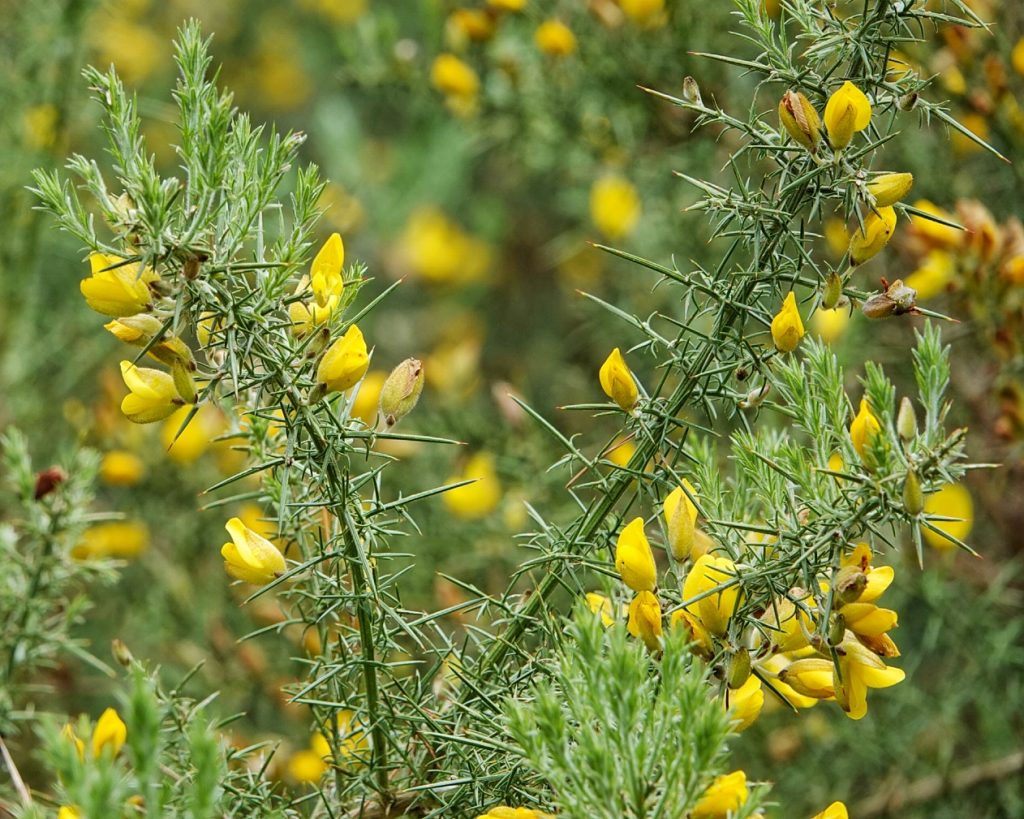
Gorse does make a great shelter for small birds and mammals, because larger predators cannot navigate its recesses without incurring damage. It also fixes nitrogen in the soil, and lectin in its seeds is used to identify folks with Bombay phenotype blood, a rare blood type that lacks H-substance antigens, meaning they cannot receive transfusions from anyone with the standard A,B,O blood types.
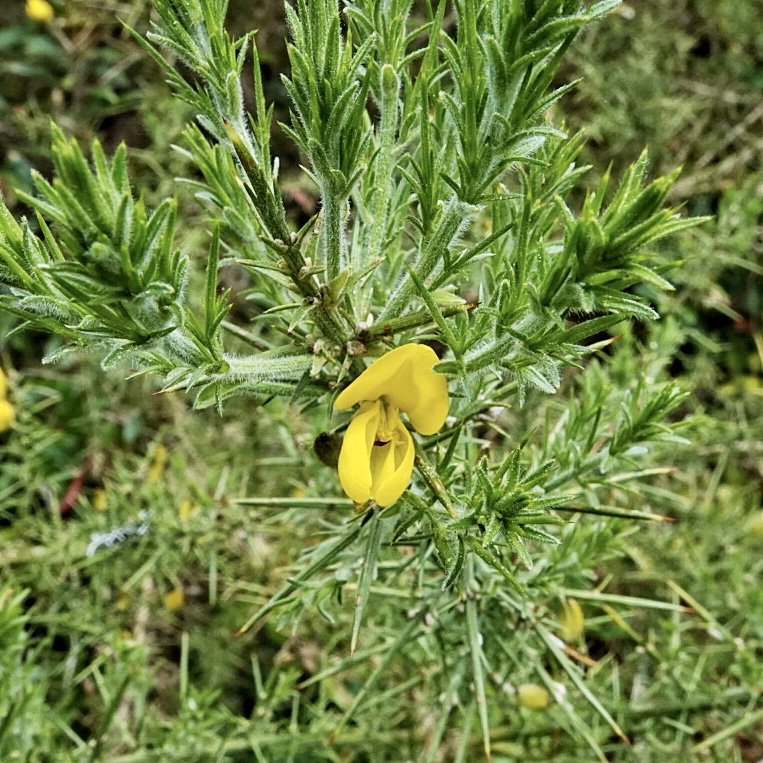
But that is the extent of the positive things one can say about gorse. It is highly invasive, almost impossible to kill, and produces allelopathic chemicals that prevent most other plants from growing near it. It also ignites easily, due to high levels of flammable oil, and gorse fires burn particularly hot and spread rapidly into surrounding areas. It was burning gorse, imported from Ireland by the town’s founder, George Bennett, that decimated the business district and most of the residences of Bandon, Oregon in 1936. And burning it does not get rid of it. On the contrary, gorse responds to fire by propelling its fire resistant seeds a dozen yards or more, and those seeds may remain viable for up to 30 years. For an extensive rundown on gorse control, see the excellent article by Michael Potts here.
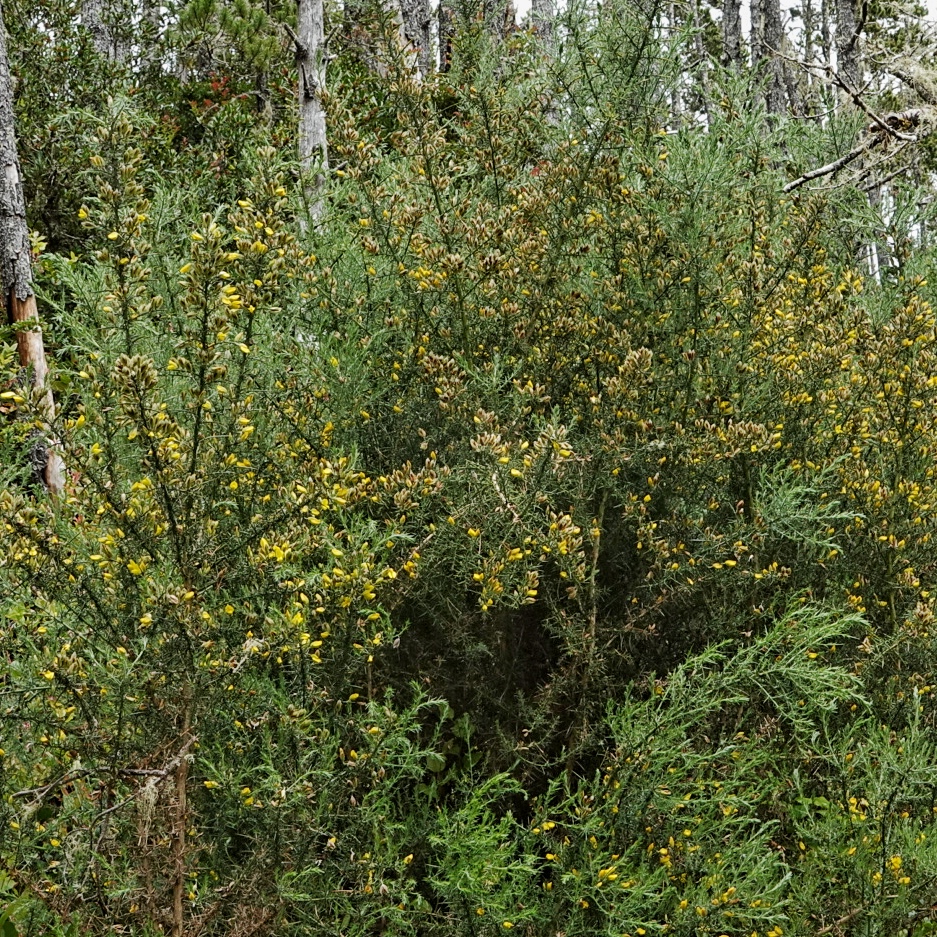
Description-Large (up to 10’ tall) shrub with long spines and large yellow pea flowers; leaves clover-like on new shoots, but soon form hard spikes in dense concentrations; stems many angled; hairs on new shoots become barbs.
Similar species-From a distance this can be confused with Scotch broom, but up close there is nothing else like gorse.
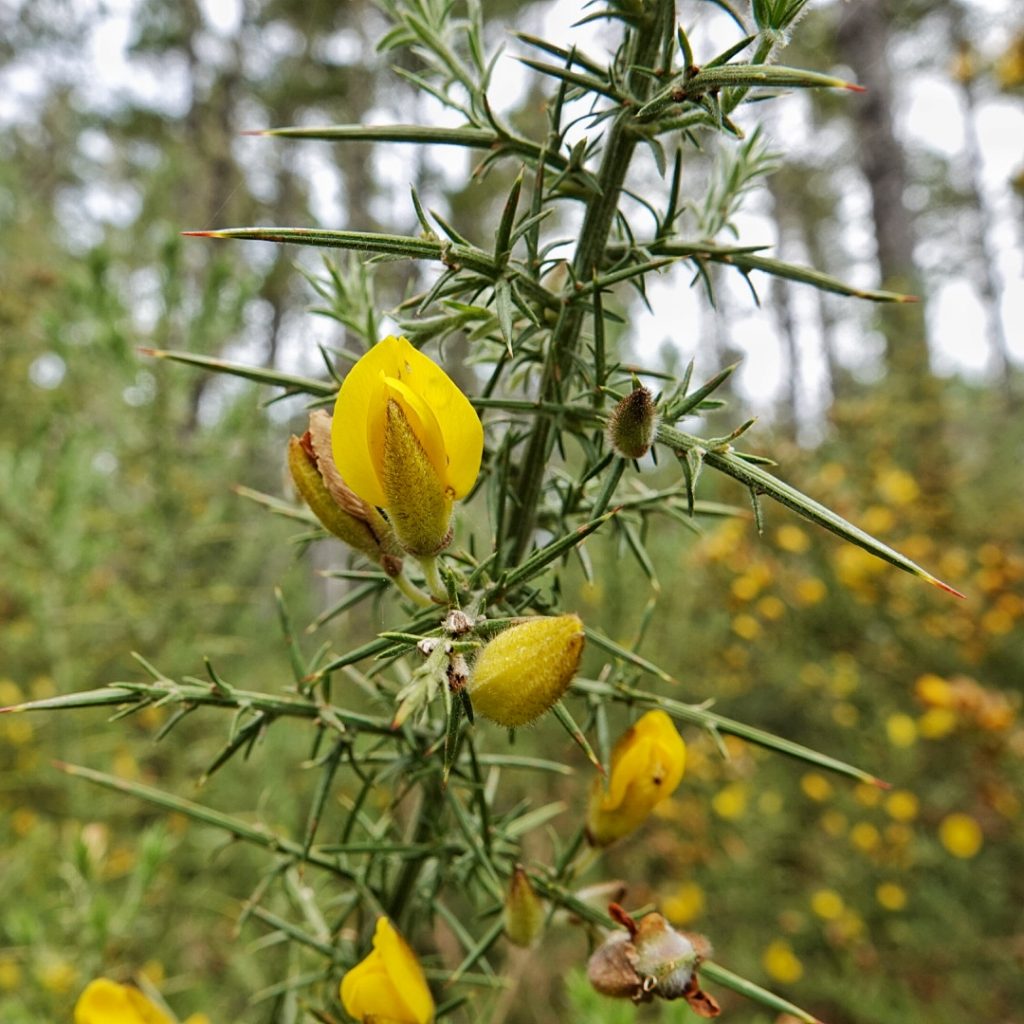
Habitat-Dry disturbed ground, dunes and other poor and/or sandy soil, overgrazed pastures, with a minimum of shade, at low elevations.
Range-European native; naturalized along the coast in our region, and has been found in widely scattered locations in the interior west of the Cascades in Oregon.
Reproductive timing-Blooms April to September
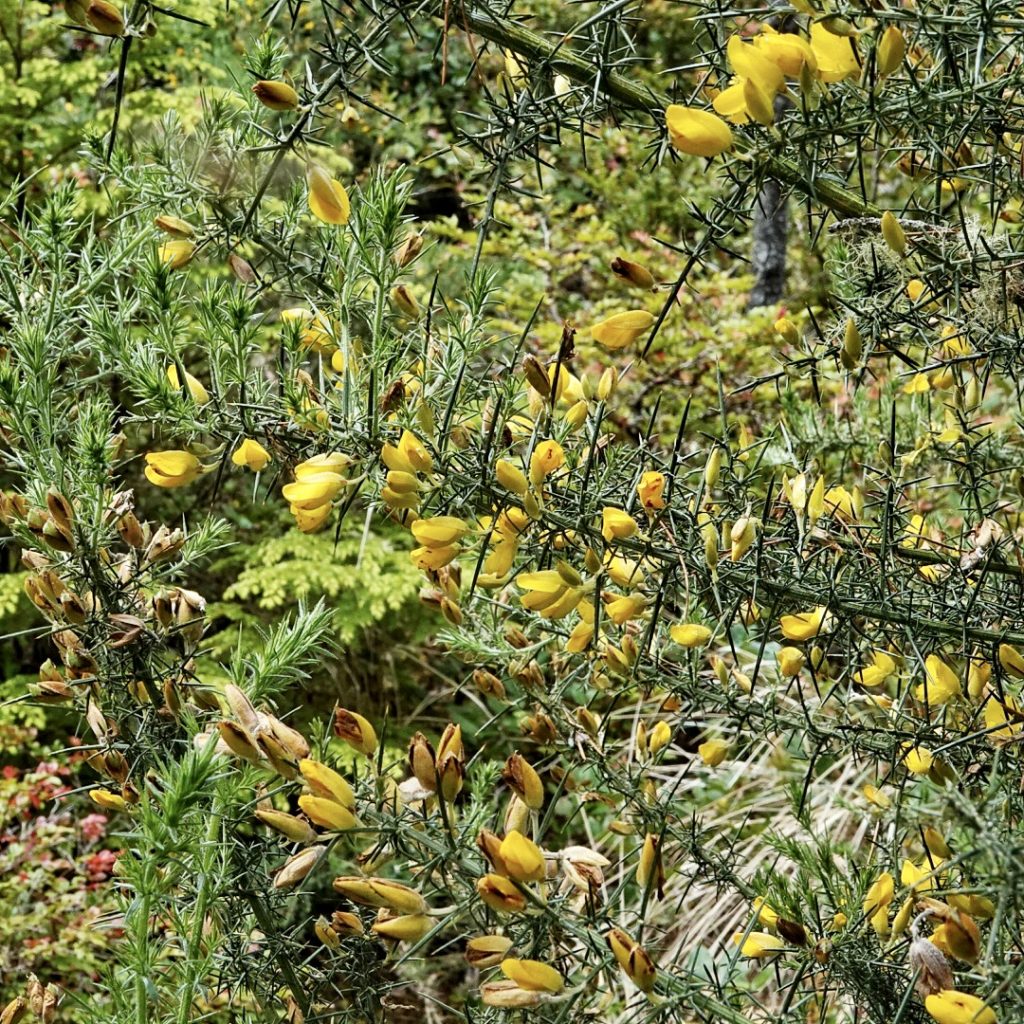
Eaten by-Bees and other pollinators visit its flowers, but only for pollen (which is released in an explosive burst), since it has no nectar; herbivores browse the seedlings, but once the leaves have turned to spikes the plant is left alone; Tetranychus lintearius (gorse spider mite) and Exapion ulicis (gorse seed weevil) have been introduced as biological control agents.
Etymology of names–Ulex is a Latin term describing spiny shrubs. The specific epithet europaeus describes its European origin.
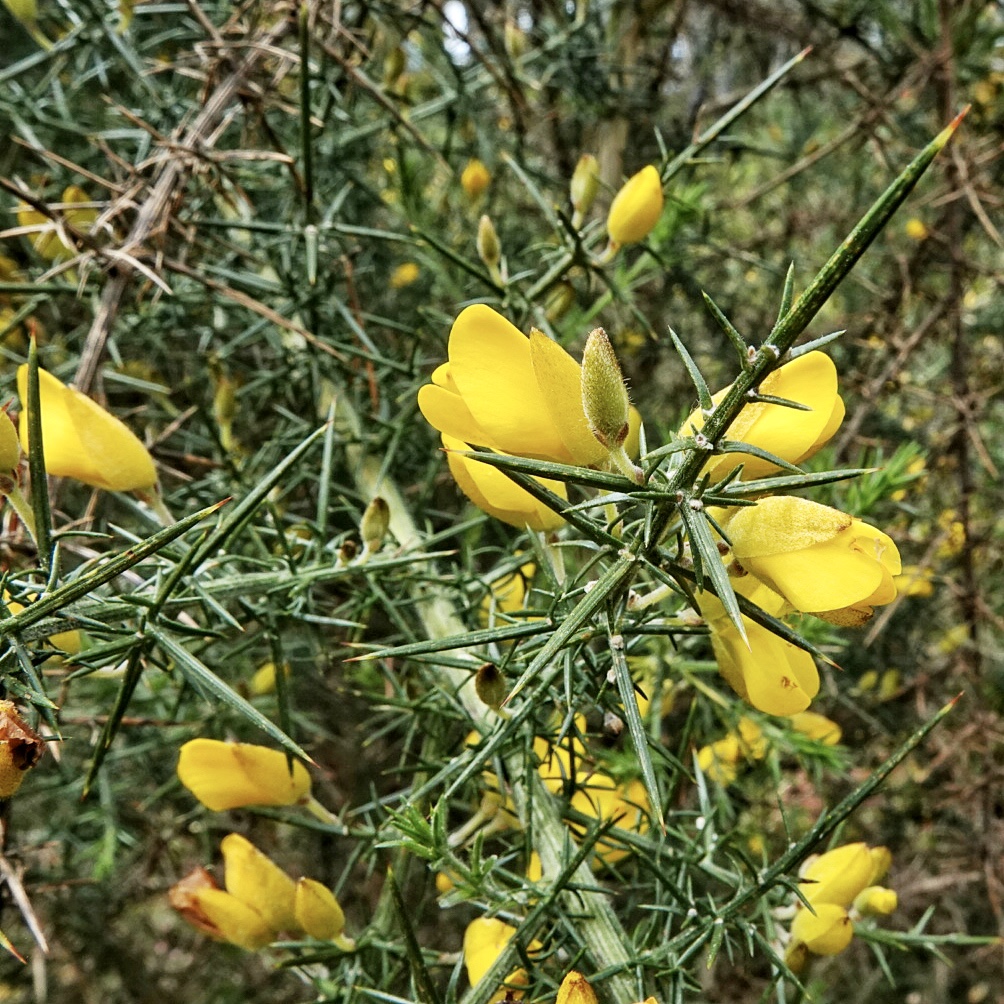
https://wiki.bugwood.org/Ulex_europaeus
https://pfaf.org/user/Plant.aspx?LatinName=Ulex+europaeus
https://casparcommons.org/Headlands/GorseGlyphosateGreed.php
https://www.fs.fed.us/database/feis/plants/shrub/uleeur/all.html
http://biology.burke.washington.edu/herbarium/imagecollection/taxon.php?Taxon=Ulex%20europaeus

I’m behind reading your posts. I read this one, and found myself unable to put it down. Fascinating! Thx for all your efforts to deliver such interesting information.
Well, you might not be that far behind, because this is my first one I 10 days. Thanks!